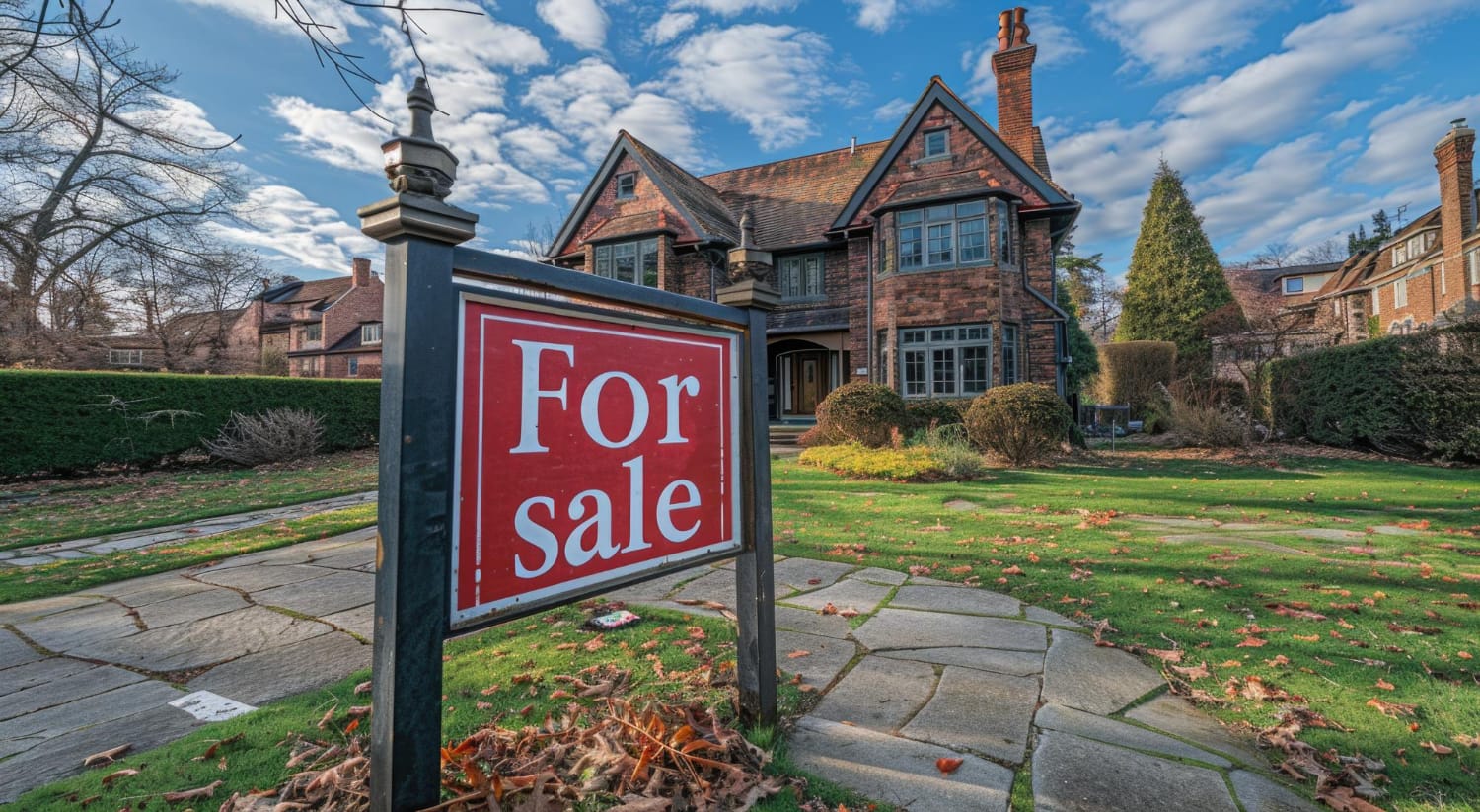FEATURED ARTICLE
Seven Different Types Of Mortgages In The U.S

Rebekah May
October 20, 2020 •6 min read
TABLE OF CONTENTS
1. Fixed Rate Mortgage
2. Adjustable Rate Mortgage
3. FHA Mortgages
4. VA Mortgage
5. USDA Mortgage
6. Jumbo Mortgage
7. Interest Only Mortgage
Summary
If you’re thinking about buying a new home, you might be wondering about all the different types of mortgages available in the U.S.
In the U.S there are many different types of mortgages, each with its own benefits and drawbacks.
It’s therefore important that you understand the differences between types of mortgages, so you can pick a mortgage that’s right for your financial needs.
In this guide we’re going to take you through the different types of mortgages you can get in the U.S. We’ll start with the most common types of mortgages; fixed rate and adjustable. And then we’ll look at more specific types of mortgages such as FHA, VA, USDA and Jumbo mortgages.
1. Fixed Rate Mortgage
A fixed-rate mortgage is a loan with an interest rate that is fixed for a set term.
In the U.S the most common term for a fixed-rate mortgage is 30 years. However, 15-year fixed-rate mortgages are also popular.
If you make the correct repayments each month on a fixed-rate mortgage, you will have completely paid off your mortgage by the end of the term.
One reason these types of mortgages are popular is that the interest rate never changes. If the economy goes through a bad patch, you can trust that your monthly repayments won’t be impacted. This means you have the security of knowing exactly how much money you need to repay each month.
30 year fixed rate mortgages are the most common because paying your mortgage off over a longer period of time means that your monthly repayments are much smaller. Smaller payments means you have more money to fund other financial goals you might have.
This might however be quite short-sighted. It’s important to remember that the longer the loan, the more money you’ll pay in interest. Firstly, because you might be charged higher interest fees, to begin with. And secondly, because the total cost of your home will be much higher the longer your term.
If you can afford to, getting a 15 year fixed rate mortgage may be better for you. Interest rates are usually lower, and the total cost of your home will be less because you can repay the loan more quickly.
2. Adjustable Rate Mortgage
With an adjustable rate mortgage, you’ll receive a competitive fixed rate for a short period of time. This introductory rate is usually set for the first one to five years of your term, and is often lower than many fixed rate loans.
After your introductory rate has ended, your rate will be adjusted annually. This means that your monthly payments could increase, or decrease.
If you’re lucky, interest rates could fall and you could find yourself on a better deal than many who decided to opt for fixed rates. However, this also means there’s potential for interest rates to skyrocket - meaning you could end up paying thousands of dollars more in the long run.
If you’re worried about this happening, search for a deal that has payment caps. These caps limit how much the rate can change and the total rate changes over the whole term, giving you peace of mind that you’ll always be able to afford any repayments.
3. FHA Mortgages
If you’re looking for a mortgage but are worried that your income, or your credit score are too low, then considering an FHA mortgage might be best for you.
An FHA mortgage is a type of loan that is insured by the Federal Housing Administration. This insurance from the FHA reduces the risk of loss to a lender, which means riskier borrowers are more likely to be accepted.
You can be accepted onto both fixed and variable rate mortgages under an FHA mortgage, and you might even receive better rates. Down payments often don’t need to be as high with an FHA mortgage compared to other more conventional types of loans.
However, because a FHA mortgage involves a type of insurance you are required to pay a premium. That means you should be prepared to pay both an upfront cost and an annual cost.
4. VA Mortgage
VA loans are mortgages backed by the Department of Veterans Affairs. They are available to anyone with a military background, whether you’re a current service member or a veteran.
They’re usually issued by private lenders, such as a bank or a mortgage company, and they offer families lower rates and more competitive terms. They also rarely require a down payment, and your closing fee will be no more than 1% of the total value of your loan. Both these things can therefore make it much easier to purchase a home.
You are generally offered a better rate than other mortgages because if you aren’t able to make a full payment, the government repays a portion of the loan for you. The lenders therefore see little risk in you borrowing from them.
However, there are some restrictions in place. Not all properties are eligible for a VA mortgage. You can’t use it to purchase a second home. And, you will have to pay a funding fee. This fee is decided by the government and is a one-time payment. How much you pay will depend on the size of the loan, the type of loan, and whether it’s your first VA loan.
5. USDA Mortgage
Next on our list of types of mortgages in the U.S, we have a USDA Mortgage. A USDA mortgage is a loan that is backed by the Department of Agriculture. This loan is offered to rural property owners, for people with low to average income for their area.
This type of mortgage doesn’t require a down payment, which makes it much easier to get onto the property ladder. That means buyers can finance 100% of a home’s purchase price, and access above average mortgage rates.
To be eligible for a USDA mortgage, the property must first be in a qualified “rural” area. Rural is normally defined as a region with a population of fewer than 20,000 people. To be accepted for a USDA mortgage you also can’t earn 15% more than the median local salary, which you have to prove through your tax returns.
6. Jumbo Mortgage
Jumbo mortgages are designed to finance more expensive properties, often in highly competitive real estate markets. This type of mortgage in the U.S comes with a different set of underwriting requirements and tax implications. Anyone looking to take out a jumbo mortgage will have to go through more meticulous credit checks and they’ll have to have an extremely high credit score.
If you choose a jumbo mortgage, you’ll need to prove that you can cover the monthly mortgage payments. Some loan amounts will require the borrower to earn a certain amount of money each year. They are generally considered appropriate for anyone who earns between $250,000 and $500,000 a year.
All borrowers will also need 30 days of pay stubs and the last two year’s worth of W2 tax forms handy. You must also prove that you have enough money saved to pay six months of the mortgage payments.

7. Interest Only Mortgage
An interest only mortgage is exactly what it seems. With this type of mortgage you are only required to pay off the interest that a lender is charging. Doing this means your monthly repayments are much smaller, but does also mean that you’re not actually paying back any of the money you have borrowed.
A downside of this is that you’re not building any equity in the house. You’ll only benefit from any increase in value that occurs due to market circumstances.
The term for an interest only mortgage is usually around five to 10 years. When the term has ended, you can either refinance the loan onto a mortgage that isn’t just paying off the interest. Or you can continue with another interest only loan.
If you’re not going to be in the property for a long time, and you have large cash savings/ a rising income, then interest only mortgages can be useful. But, for the majority of people they should be avoided because you don’t gain any equity in your property.
Summary
Here we’ve looked at seven different types of mortgages in the U.S.
As you’re likely to be paying your mortgage back for a long period of time, we hope this article has helped you decide which type of mortgage is best for you and your budget.
If you found this article helpful, then drop us a message on Twitter. Or, start a conversation on the Emma Community.
Emma is a money management app that connects all your bank accounts to track your monthly spending and subscriptions. Emma will help you visualise and take control of your finances. Make sure you aren’t overspending and show you practical steps to start budgeting effectively.
You may also like
Check out these related blog posts for more tips
© 2025 Emma Technologies Ltd. All Rights Reserved.
Emma is registered and incorporated in England and Wales.
Emma Technologies Ltd is an appointed representative of RiskSave Technologies Ltd, which is authorised and regulated by the Financial Conduct Authority (FRN 775330).
Payment services (Non MIFID or Deposit related products) for Emma Technologies Ltd are provided by The Currency Cloud Limited. Registered in England No. 06323311. Registered Office: Stewardship Building 1st Floor, 12 Steward Street London E1 6FQ. The Currency Cloud Limited is authorised by the Financial Conduct Authority under the Electronic Money Regulations 2011 for the issuing of electronic money (FRN: 900199). For more detail on how your money is protected please see here. You can also find Currency Cloud's Terms of Use here.
Emma Technologies is an Introducer Appointed Representative of Quint Group Limited and not a lender. Quint Group Limited is authorised and regulated by the Financial Conduct Authority (Firm Reference Number 669450). Monevo Limited is an Appointed Representative of TransUnion International UK Limited. TransUnion is authorised and regulated by the Financial Conduct Authority (Firm Reference Number 737740). Emma Technologies introduces customers first to Quint Group Limited, as a licensed credit broker, who then refers on to Monevo Limited.
Emma is registered with the Financial Conduct Authority under the Payment Services Regulations 2017 for the provision of payment services.
Financial Conduct Authority Reg Nr: 794952.
Company Registration Number: 10578464.
Data Protection Registration Number: ZA241546.
All testimonials, reviews, opinions or case studies presented on our website may not be indicative of all customers. Results may vary and customers agree to proceed at their own risk.
Resources: Cancel subscriptions, Cashback offers, Who charged me, Rent Reporting, Budgeting, Investment universe, Emma vs Moneyhub.
Featured cashback offers: Samsung, SimplyCook, NordVPN, Audible, M&S Homeware.









